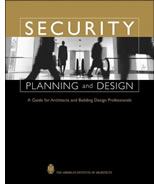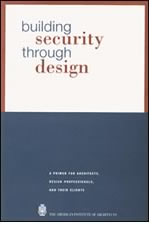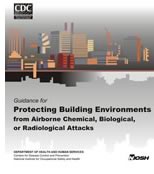

BEST
PRACTICES
Increase Your Security Knowledge
 The
literature on building security as it relates to design continues to grow.
Victor O. Schinnerer & Company offers an annotated bibliography of
readily available reference material to allow you to familiarize yourself
with this specialized topic.
The
literature on building security as it relates to design continues to grow.
Victor O. Schinnerer & Company offers an annotated bibliography of
readily available reference material to allow you to familiarize yourself
with this specialized topic.
Facilities Standards for the
Public Buildings Service
This publication contains policy and technical criteria for the programming
and design of buildings for the General Services Administration. It
is available online at no cost from the GSA Web site.
 Security
Planning and Design: A Guide for Architects and Building Design Professionals
Security
Planning and Design: A Guide for Architects and Building Design Professionals
An important reference that provides architects and other design professionals
with the guidance they need to plan for security in both new and existing
facilities. This book emphasizes basic concepts and provides the architect
with enough information to conduct an assessment of client needs as well
as work with consultants who specialize in implementing security measures.
Included are chapters on defining security needs, understanding threats,
blast mitigation, building systems, facility operations, and biochemical
protection. Security Planning and Design
can be ordered from the AIA Bookstore by calling 800-242-3837 (option
4) or by sending an e-mail request
to bookstore@aia.org.
 Building
Security Through Design: A Primer for Architects, Design Professionals,
and Their Clients
Building
Security Through Design: A Primer for Architects, Design Professionals,
and Their Clients
This 24-page booklet provides an overview of security issues, including
defining security needs and shaping security responses. It includes a
detailed explanation of how to analyze potential threats to security.
The booklet can be ordered from local AIA components, through the national
AIA Bookstore by calling 800-242-3827 (option 4) or
online by visiting the AIA Building Security Through Design site.
The Building Safety Assessment Guidebook
Written for the average building occupant, this publication from the Council
on Tall Buildings and Urban Habitat (CTBUH) seeks to describe the various
safety systems that are present in a newly constructed building. The
guidebook is available online from the CTBUH Web site.
 Guidance
for Protecting Building Environments from Airborne Chemical, Biological,
or Radiological Attacks
Guidance
for Protecting Building Environments from Airborne Chemical, Biological,
or Radiological Attacks
This publication from the National Institute for Occupational Safety and
Health offers recommendations on the physical security of ventilation
systems, airflow and filtration systems, and systems maintenance and training.
It
is available online at no cost by visiting the NIOSH Web site or by
calling 800-356-4674.
The Building Safety Enhancement Guidebook
Written for building owners and managers, this CTBUH document seeks to
provide options that go beyond the requirements of the building code that
might be chosen to enhance an existing building or be incorporated into
the construction of a new building. In presenting these options, CTBUH
advocates a performance-based design approach to mitigate unusual and
extreme hazards, rather than building code changes. The
guidebook is available online from the CTBUH Web site.
Copyright 2003 The American Institute of Architects.
All rights reserved. Home Page ![]()
![]()
 |
||
| The AIA collects and disseminates Best Practices as a service to AIA members without endorsement or recommendation. Appropriate use of the information provided is the responsibility of the reader. More
Best Practices are available for AIA-member reference at AIA.org.
The following selections from the AIA Best Practices site may
provide additional information related to design for security: To access or download: This Best Practice is a contribution of Victor O. Schinnerer & Company, program administrators of the AIA Commended Professional Liability Insurance Program. Adapted with permission from Schinnerer's Guidelines for Improving Practice.
|
||